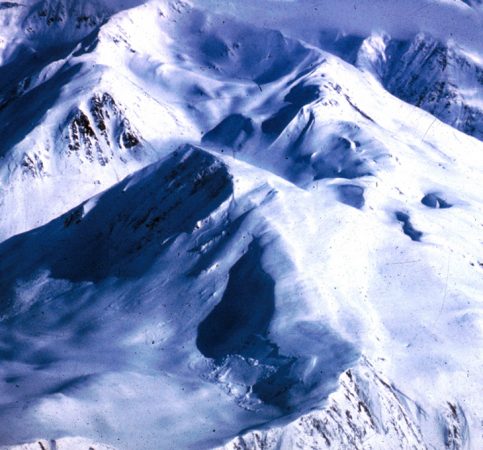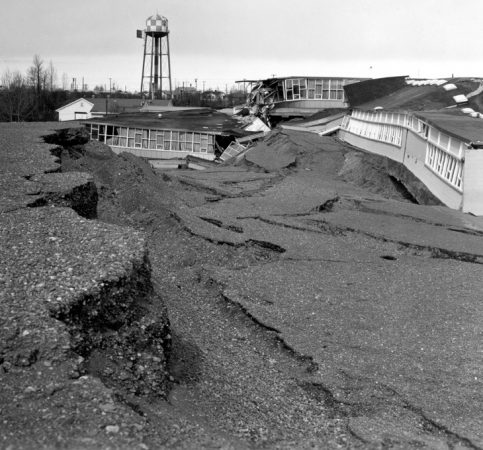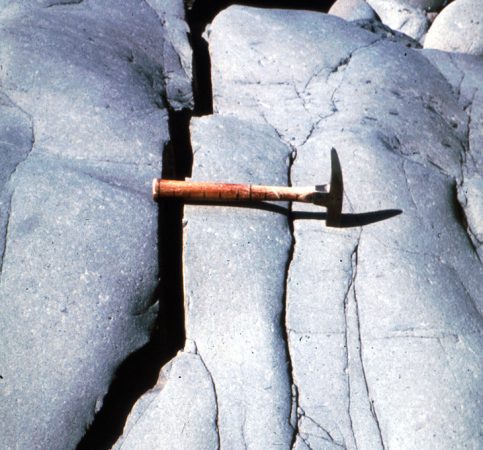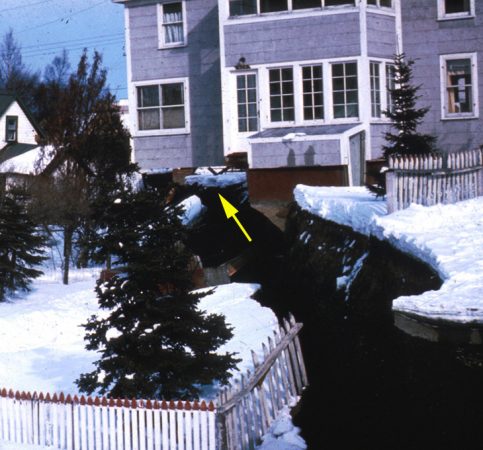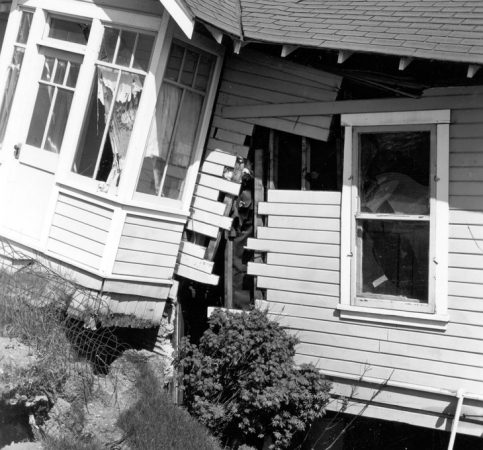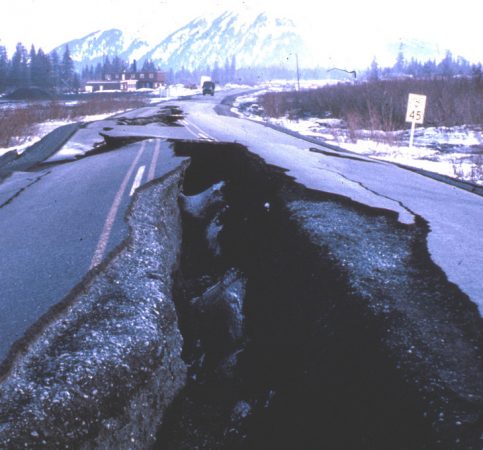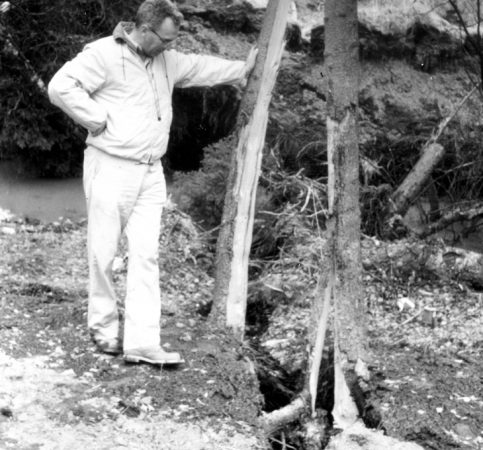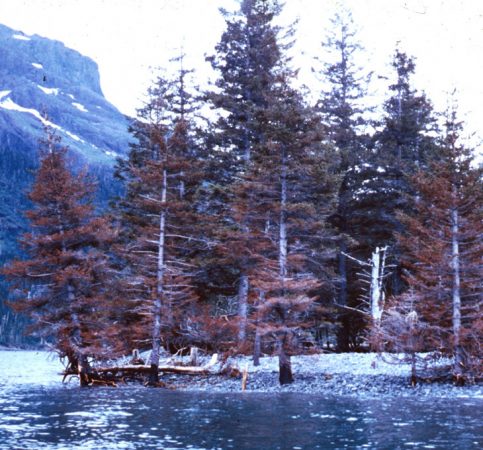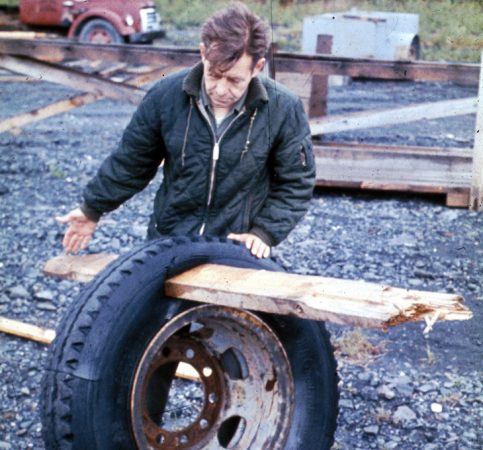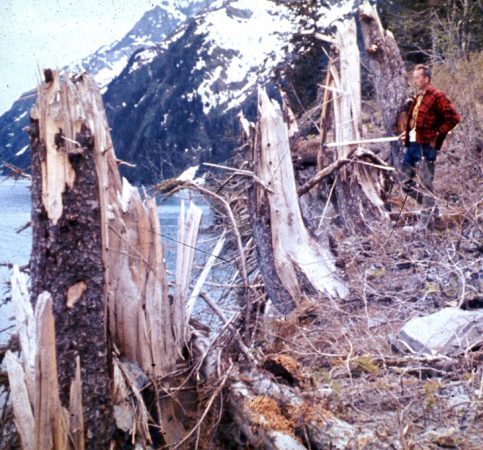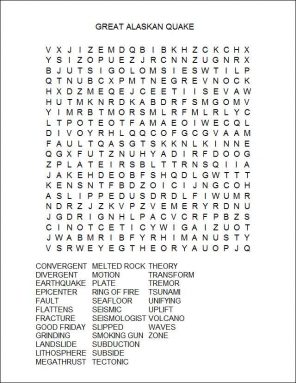The quake that shook up geology
A huge earthquake in Alaska 50 years ago triggered a shift in what geologists know about Earth
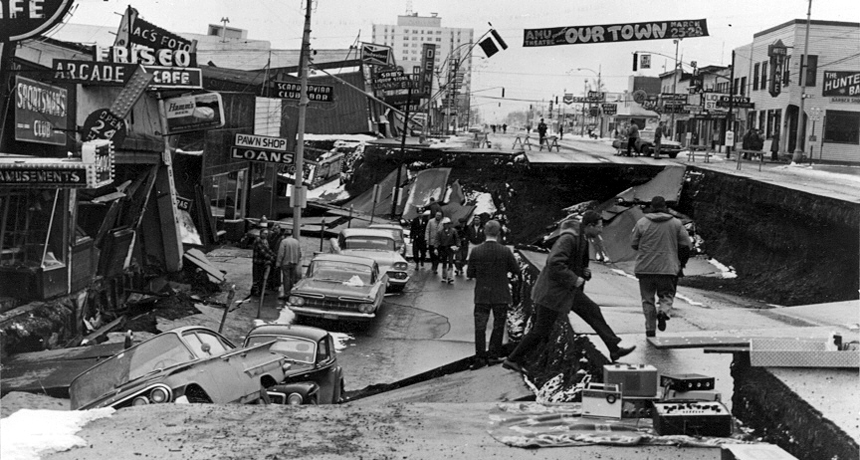
The 1964 Great Alaska Quake caused several downtown areas of Anchorage to collapse. Here, that 11-foot (3.4 meter) drop — or subsidence — took a line of parked cars with it. Before the event, the sidewalk (left) had been as high as the street (far right).
U.S. Army 1964, USGS.gov
By Beth Geiger
March 27, 1964, was a quiet day in Alaska. Yet as dusk approached on this Good Friday, just two days before Easter, a major upheaval was in store. At 5:36 p.m., the ground began shaking violently. Alaskans are familiar with earthquakes. Indeed, the state averages some 60 each day — about 22,000 a year. But this was no ordinary tremor. This was the Big One.
In Anchorage, roads buckled and sank. Houses pulled apart. Railroad tracks warped. In Valdez, the ground beneath the harbor slumped — and nearly swallowed a ship docked there.
Most earthquakes rattle the ground for just seconds. Maybe even for a half or full minute. But 50 years ago, that now infamous Alaska quake shook steadily and terrifyingly for almost five solid minutes.
“It was so large that it caused the entire Earth to ring like a bell,” observes seismologist Tom Brocher and his colleagues from the U.S. Geological Survey (USGS) in a recent publication.
Then, as Alaska’s shaking ceased, things got worse — much worse.
The earthquake had uplifted large sections of seafloor. That movement generated huge and fast-moving waves in the open ocean, called tsunamis. In bays and inlets, the quake also triggered underwater landslides. These unleashed more tsunamis.
Together, these destructive waves swept Alaska’s coastline with devastating speed and power. In places, the waves towered as high as a 20-story building. They washed away everything in their immediate path — buildings, docks and people.
No Alaskan who survived would ever forget this day. By midnight, 131 people were dead. Most had been killed by the tsunami waves that raked not just the coast of Alaska, but Oregon and California too. Indeed, like ripples in a pond, a tsunami travels outward in all directions.
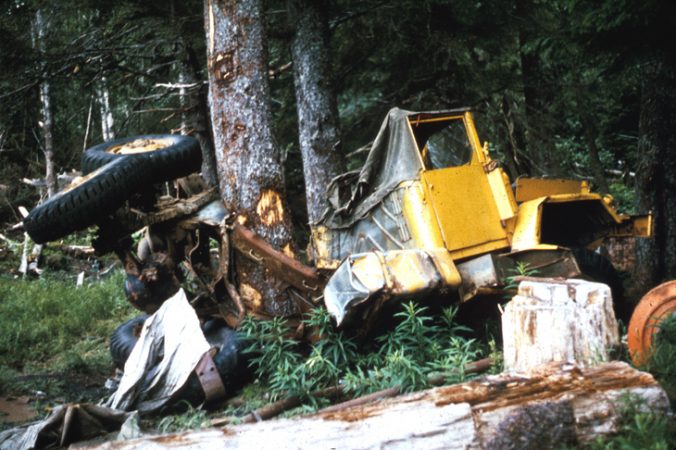
The Great Alaskan Earthquake was a magnitude-9.2 event. The only stronger trembling ever recorded was a magnitude-9.5 monster that shook Chile in May 1960.
Now, a full half-century after Alaska’s gigantic quake, geologists are still feeling its effects. The reason: This quake opened a new era in geology. And it has forever changed what scientists understand about the constant remodeling of Earth’s surface.
A new worldview
In 1964, plate tectonics still was just an emerging — if unproven — concept. It held that Earth’s uppermost layer, called the lithosphere, is broken into enormous pieces. Each giant slab was expected to be moving slowly.
Now, 50 years later, plate tectonics is no longer a clever hypothesis. It’s a well-documented certainty.
Like a jigsaw puzzle, Earth’s lithosphere is divided into interlocking pieces, called plates. (The lithosphere is Earth’s outer solid layer. It includes the crust and uppermost mantle.) Depending on how you count them, there are about 12 main tectonic plates, and numerous smaller ones. Their thickness ranges from 80 to 200 kilometers (50 to 124 miles). Plates beneath the oceans are much thinner than those under continents. These tectonic plates move gradually, bumping and grinding against each other.
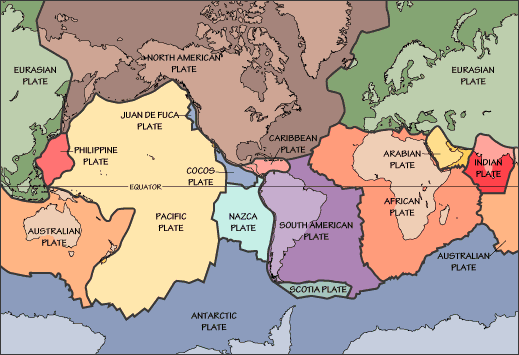
Scientists now classify the bumping and grinding between plates in three different ways. Along convergent boundaries, neighboring plates either collide head-on or a denser ocean plate dives beneath a lighter continental plate. Along other, divergent boundaries, plates move away from each other. At still others, known as transform boundaries, plates slide past each other. The friction between these massive plates means they don’t move fast. Some start and then stop, only to start again much later.
Earth definitely moved with a start during the 1964 quake. But it took some geological sleuthing to determine how and why.
Finding proof
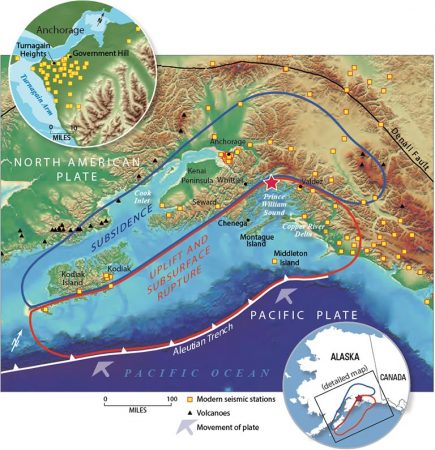
They knew earthquakes develop when shifts occur along underground fractures, called faults. They still had many questions to answer. One was figuring out why some parts of Alaska had risen as much as 11.5 meters (38 feet), while the ground at other sites had dropped, or subsided. They also sought to locate the quake’s epicenter. The epicenter is that X-marks-the-spot site where the tremors commenced.
Plafker’s team mapped all the changes triggered by the quake that they could find. They were scouting for patterns. In particular, “We were looking for evidence of surface faulting,” he recalled at a press briefing earlier this week. Lucky for this team, 70 new seismographs (SIZE moh grafs) had recently been installed all over the world. These instruments detect and record earthquakes. By recording the size, direction and arrival times of the different seismic waves from a quake, seismographs help pinpoint its size and epicenter.
“It was the first global seismic network,” West tells Science News for Students. “So this was the first earthquake to be recorded around the world.” In the days and weeks that followed, dozens of smaller earthquakes continued to rattle Alaska. The seismographs recorded these aftershocks as well. Those instruments also helped identify the shape of the fault responsible for all the shaking.
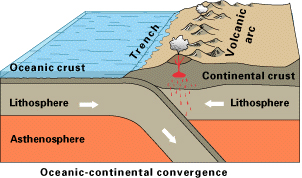
Scientists next had to fit this finding to their understanding of plate tectonics. It turned out that the ramp’s shape was very, very significant. Plafker had confirmed that the earthquake occurred in a subduction zone. That’s a type of convergent plate boundary where one plate dives beneath another.
Alaska’s long southern coastline marks where the Pacific Plate, moving north, dives beneath the North American Plate. And as the Pacific Plate dives, it slopes downward.
“George’s interpretation of this as a subduction zone was a real key,” says Gary Fuis. He’s a geophysicist with the USGS who recently co-authored a study looking back at the 1964 earthquake. Explains Fuis: “This was some of the first clear evidence that plate tectonics was right.”
Sticky situation
The dynamics of a subduction zone explained why the 1964 earthquake was so massive. Tectonic plates constantly push against each other. They tend to subtly creep along. When a fault actually slips, the motion is both sudden and exaggerated. It’s like opening a sticky window or door. You push and push. Then suddenly, it pops open.
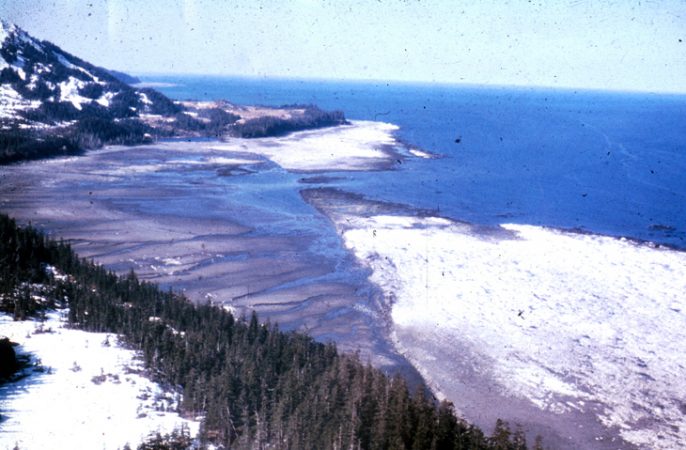
That motion was “huge,” West says. East to west, nearly 960 kilometers (600 miles) of fault had ruptured at once.
Plafker named this event a megathrust earthquake. These occur directly along subduction zones. And they are powerful. (For example, the 2011 magnitude-9.0 earthquake off the eastern coast of Japan that unleashed a huge tsunami also was a megathrust earthquake.) In fact, megathrust events are the largest type of earthquake on the planet, notes Peter Haeussler. He’s a research geologist with USGS and its Alaska coordinator of earthquake hazards research.
Natasha Ruppert at the Alaska Earthquake Center in Fairbanks is another seismologist. She now estimates that it takes at least 500 years of plate motion to set the stage for such big earthquakes.
The land that was uplifted — and sometimes dropped — by the Great Alaskan Quake also fits with the plate-tectonics model. As convergent plates collide, the overriding — or top — plate gets slowly pushed up. It’s a bit like a rug wrinkling. When the fault finally slips, it’s like a rug flattening out. Also just like a rug, the land spreads out as it flattens.
In Alaska, the flattening caused some of the affected land to drop. And it moved parts of the Alaskan coast 15 meters (50 feet) toward the sea. Meanwhile, land near the coast just above the fault rose when the fault slipped. This pattern has since been seen at other subduction zones.
But Plafker saw it first, there in Alaska.
Big picture
Geologists call plate tectonics a “unifying theory.” That’s because it explains practically everything about Earth’s crust. It explains how the continents and oceans have been shaped, and why there are earthquakes, mountains, volcanoes and tsunamis.
Naturally, most of the action occurs along the edges of tectonic plate. That is where the plates push into, against or away from each other. Imagine traveling from New Zealand clockwise around the rim of the Pacific Ocean, all the way to the tip of South America. The route is dotted by some serious volcanoes and wracked by violent earthquakes. It should come as no surprise that this perimeter has been nicknamed the “Ring of Fire.”
The Ring of Fire also marks the edge of the Pacific Plate. In Alaska, that plate dives under the North American Plate. This motion causes earthquakes. In fact, West notes, four out of every five U.S. quakes occurs in this northernmost state. Pacific Plate motion also creates volcanoes as rock melted by the sinking plate rises to the surface. In Alaska, more than 50 volcanoes have erupted over the last 250 years.
Farther to the south, the Pacific Plate slides past the North American Plate. There, in California, that motion causes earthquakes along the infamous San Andreas Fault.
Scientists are still working out many details of plate tectonics. But Alaska’s 1964 Great Quake led to a huge leap in their understanding. “In that one quake, it was the first time you could actually see plate motion in action. It was the first time we had physical proof” of plate tectonics, concludes West.
Scientists are still working out many details of plate tectonics. But Alaska’s 1964 Great Quake led to a huge leap in their understanding. “in that one quake, it was the first time that you could actually see plate motion in action. It was the first time we had physical proof of plate tectonics,” concludes Mike West.


